The Aston Martin DBX707: A Bond car for all seasons, five days and Three Peaks
Scaling the Three Peaks of Britain is not for the faint of heart and neither is driving the powerful Aston Martin DBX707. Adam Hay-Nicholls tried his hand at both.

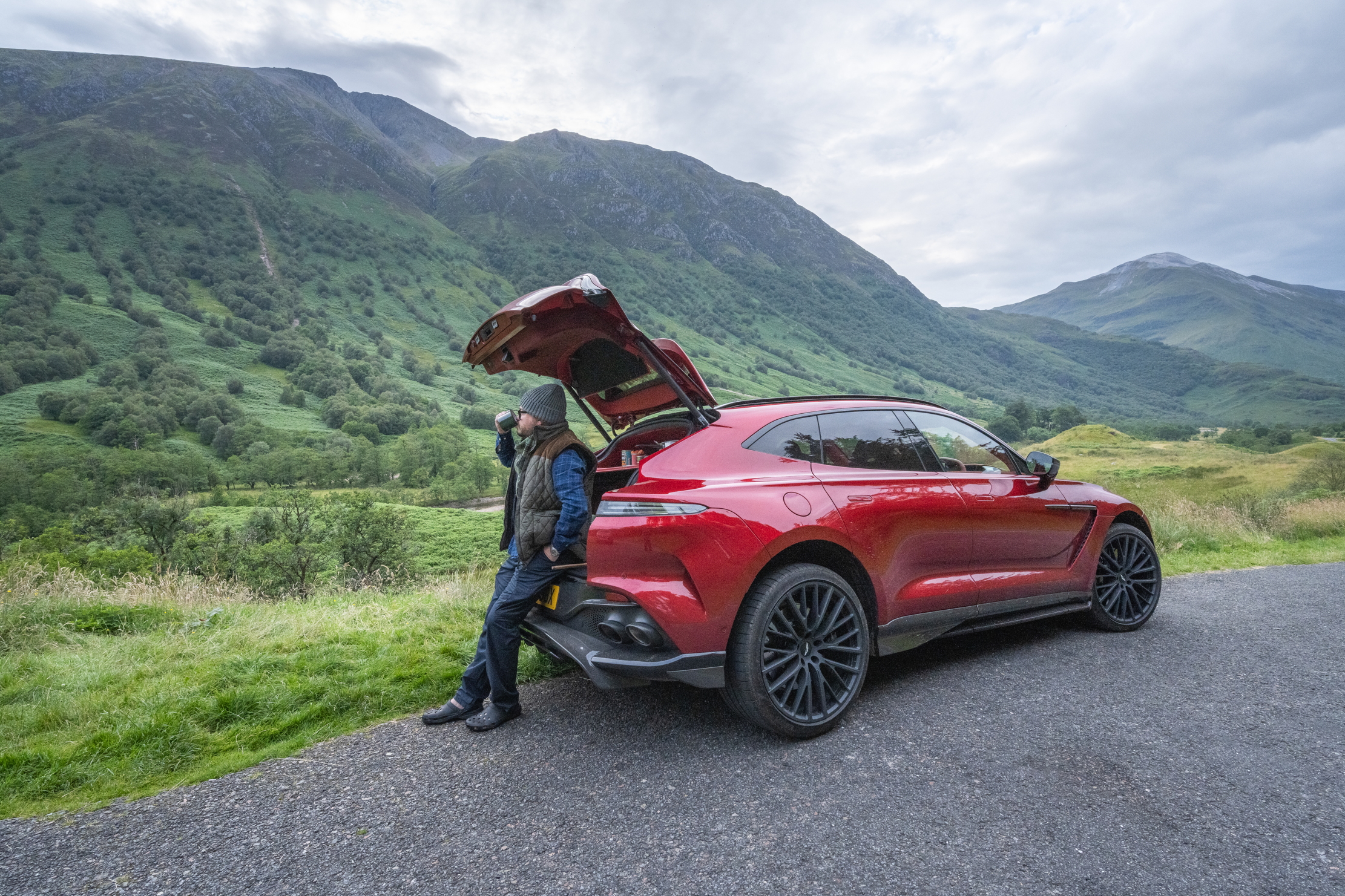
Ben Nevis, Scafell Pike and Mount Snowdon represent the three highest mountain peaks in Scotland, England and Wales, respectively. To do all three in succession — and many hard-charging hikers attempt that challenge in 24 hours — requires lots of driving through the UK’s most glorious landscapes, meaning a fast, comfortable grand tourer is of the essence. What car might be best suited to this mission to the great outdoors? Step forward the Aston Martin DBX707.
Aston Martin is an ancient (in automotive terms) English brand; this car — its super SUV — is built in St Athan, Wales. The acres of sumptuous interior leather are furnished by Bridge of Weir, Scotland. What emerges, therefore, is a holy trinity of British craftsmanship.
Outwardly, the 2024 facelift of the DBX you see here looks little different to when the model first roared onto the scene in 2020. The main changes are on the inside. The previous interior simply wasn’t special enough, nor was it ergonomically brilliant. Now, the car has one that befits a £208,500 high-sided GT, complete with a much-improved infotainment system and a touchscreen.
The other notable thing about the DBX is that it is now only available in DBX707 form. The customers have spoken: 542bhp wasn’t enough, so the 697bhp (or 707ps in new money, for Pferdestarke, German for ‘horse strength’) upgrade comes as standard. The 707 uses different turbos, with additional cooling to create that power. Only the less practical and even more expensive Ferrari Purosangue boasts more horses (18 more, to be precise) among petrol SUVs and the DBX’s chassis is so good that I think it could take plenty more.
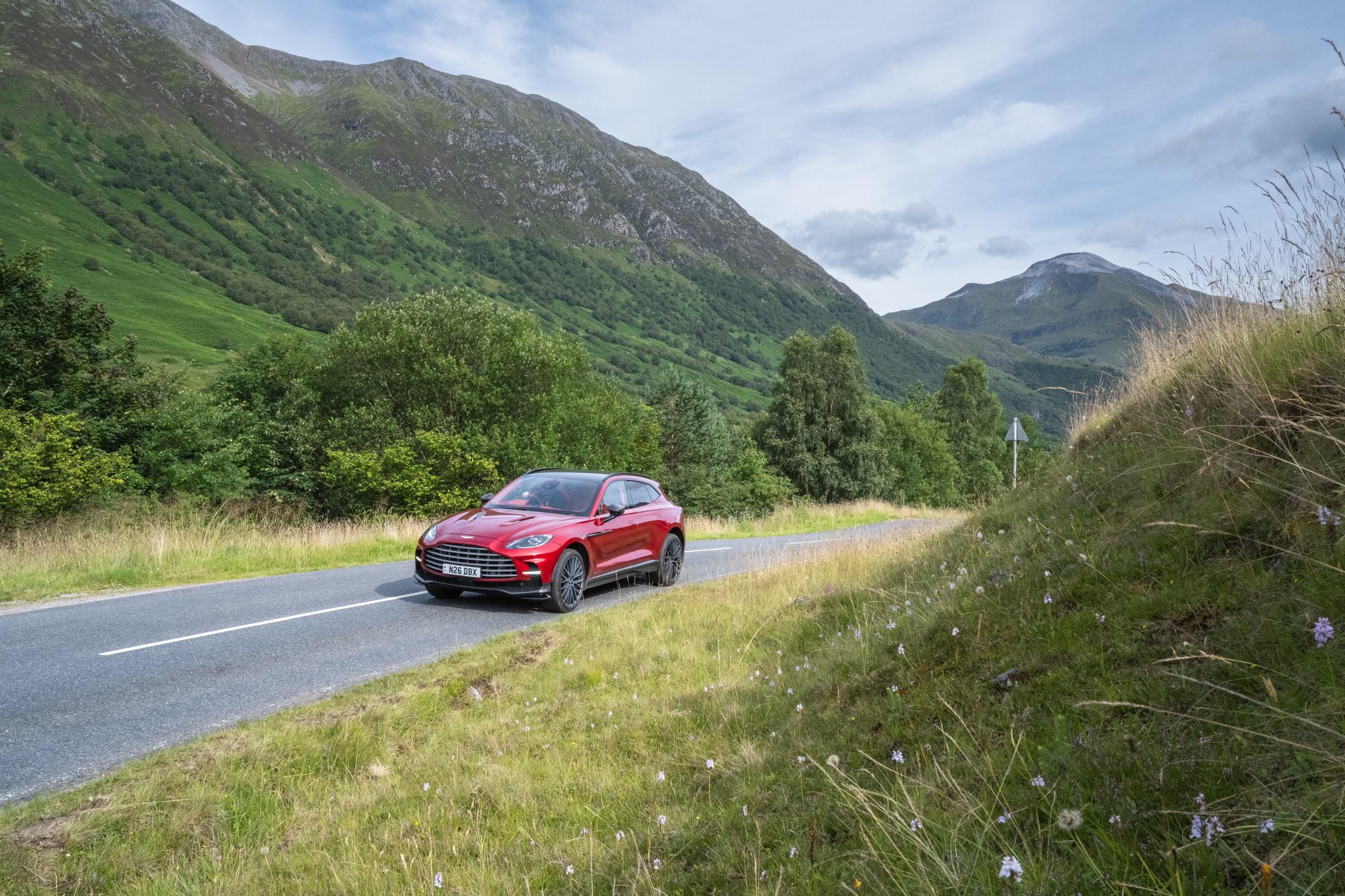
The evening before my first climb, I arrived in Fort William from the south and steered towards Ben Nevis, parking in its shadow off the Glen Nevis road where Mel Gibson filmed the Lanark village scenes in Braveheart. At nightfall, I could see headtorches of hikers zig-zagging down the mountain. Making their descent from the 4,413ft peak, the tallest in the land, they were clearly trying to do the Three Peaks challenge against the clock. These people possess a greater level of ambition, fitness and timekeeping than I do. My target was to do the Three Peaks in three days. In between, the DBX would serve as my bedroom, with the back seats folded down and a sleeping bag for warmth. It would also be my kitchen/dining room, with the aid of a small gas camping stove, a saucepan I’d brought from home and a selection of tinned food.
The following morning, I became (I believe) the first man in recorded history to cook baked beans in an Aston Martin. At 8am, I crossed the footbridge over the River Nevis and began the arduous walk towards the summit. My backpack was filled with bottled water, Peperamis for protein kicks, a hip flask of warming King’s Ginger and, in case of emergency, a sugary Kendal Mint Cake. My uncle Brig David Nicholls RM was, unlike me, a most experienced mountaineer and never ventured anywhere without a Kendal Mint Cake.
To paraphrase Ferris Bueller, legs hurt pretty fast. If you don’t stop and look around once in a while, they’ll seize up. Taking the Mountain Path — a path that was carved in 1883 and is the easiest and busiest route — saw me reach the top four hours later. The last few hundred metres of the climb were cloaked in a cloud and, alas, visibility was next to nil at the summit. Here stands a war memorial, the stone ruins of an observatory that closed 120 years ago and a shelter big enough for half a dozen hardy souls if the weather turns for the perilous.
Exquisite houses, the beauty of Nature, and how to get the most from your life, straight to your inbox.
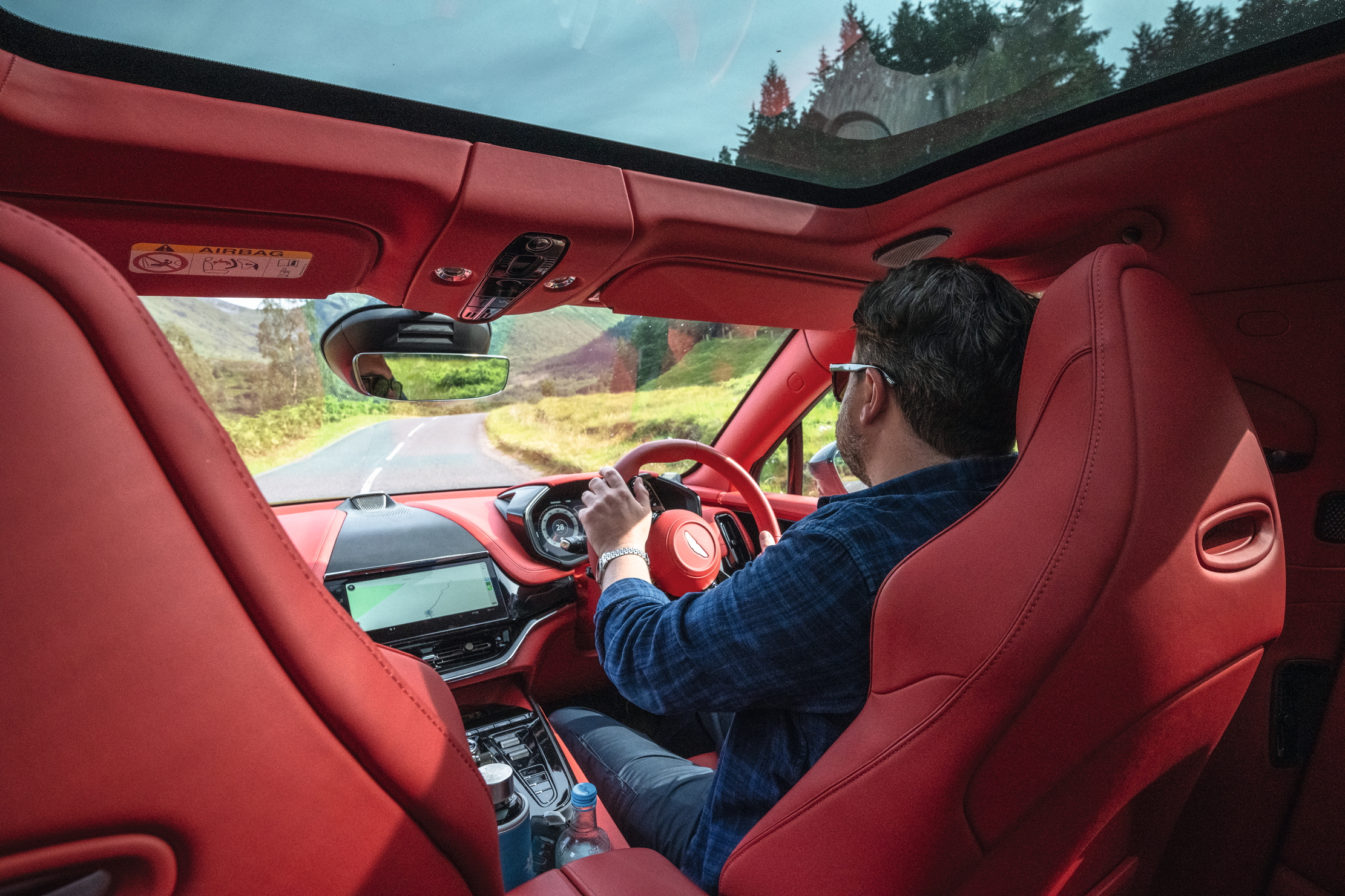
During my descent, I unwisely decided to see if I could undercut the eight-hour time I’d read online that the hike normally takes. I’d also read that coming down is harder than going up. Pish, I thought. If I could make it back to the car by 3pm, I could get to the Kirkstile Inn in the Lake District — one of my favourite pubs, close to Scafell Pike — before the kitchen closed. Alas, two-thirds of the way down my knee ligaments became more inflamed than a mouthful of Carolina Reapers. The last couple of miles were a living hell — thank goodness I’d brought my stick.
To add to my woes, I returned to the DBX to discover the battery was flat. It seemed my movements during sleep had caused the car’s electronics to remain partially on. A man from the AA came to give me a jump start and I soon hit the road and drove back through Glencoe — Skyfall country — as the sun set. By midnight, I was approaching the English border. I decided to turn off the A74(M) at Lockerbie and spent the night in Tundergarth Church’s car park, opposite the field where the nose of Pan Am 103 fell to earth. I had a fitful sleep; in part because I had some alarming dreams about what happened here on December 21, 1988, but mainly because by central locking the doors in an attempt to deceive the car’s electronic consciousness, I kept being awoken by an actual alarm.
The next day, I made my way to Cumbria, but three peaks in three days was a bridge too far, given the state of my knees. I decided to take a rest day and, thankfully, The Kirkstile provided a restorative steak-and-ale pie and a few pints of Loweswater Gold. The following morning, with my knees and quads liberally doused in Deep Heat, I made my way from the head of Wastwater up to Scafell Pike, along the Wasdale Route. The applause of the tumbling stream added a cooling accompaniment and, this time, I took it nice and gently. Again, the 3,209ft summit was in the clouds and coming down caused my knees to feel like the shock absorbers on a monster truck.
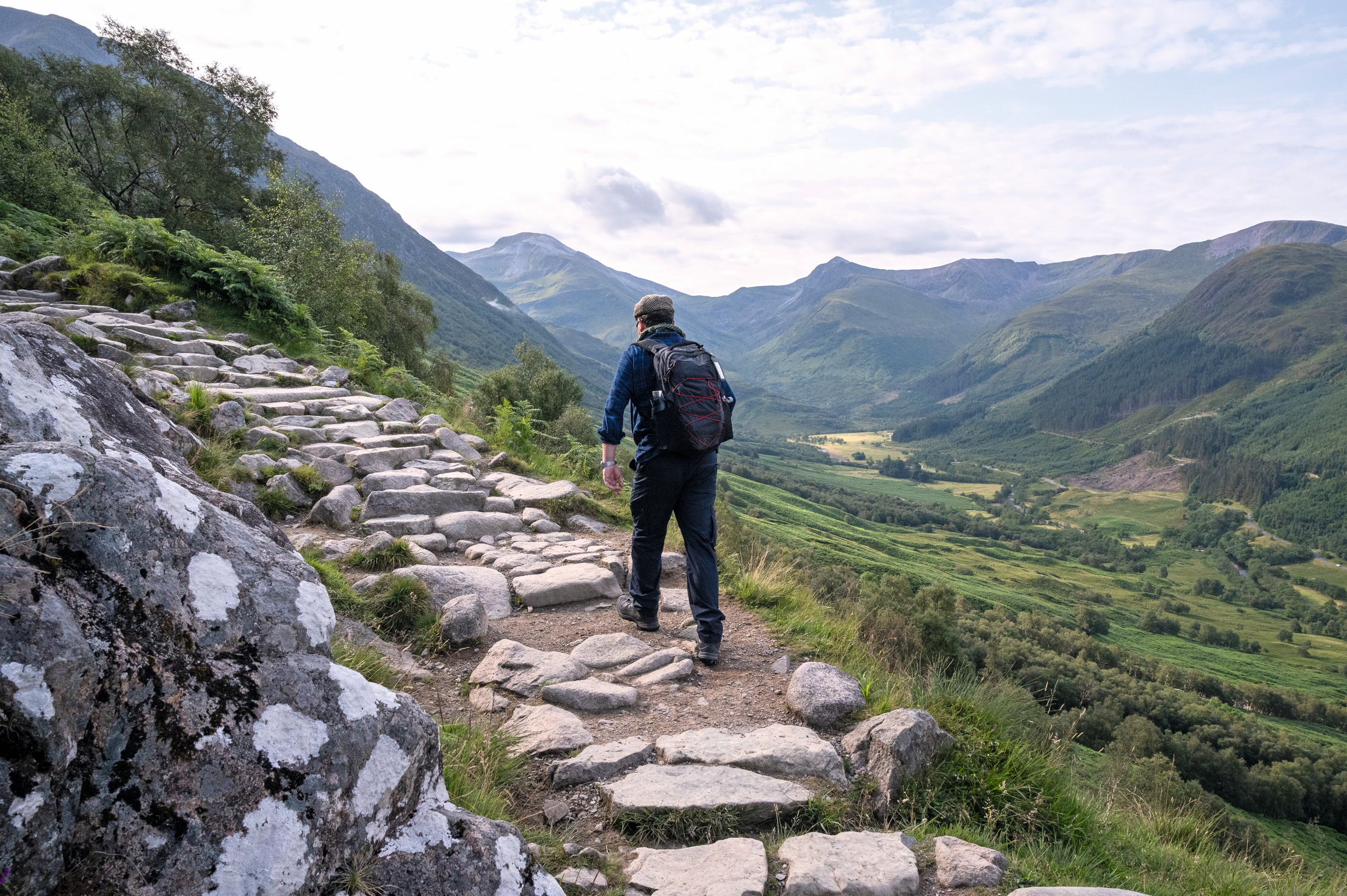
That evening I delved deeply into the DBX’s operating system and discovered a way to switch off the sensors so I could sleep soundly without fear of draining the battery or setting off the alarm. I rewarded my hacking efforts with another rest day. Three peaks in five days, I convinced myself, was still an achievement for someone who’d never attempted to scale a mountain before without a cable car and I really didn’t want my rescue narrated by Michael Buerk. It also gave me a whole afternoon to charge around Snowdonia and see what the DBX can do when it’s let off the leash.
The twin-turbo V8 exhaust note is naughty and the acceleration wild (0–60mph in only 3.1 seconds). On the road, this car feels like a proper Aston Martin. Off road, it feels like a steroidal Range Rover. Mission accomplished, then. No other car can drag itself up a rock face with a school trunk in the boot and then accelerate to 193mph with such dignity. Truly, a Bond car for all seasons.
That evening, I parked within staggering distance of the Brondanw Arms in Llanfrothen — my preferred boozer in this part of North Wales. Rather than dine on the tinned delights in the Aston’s boot that evening, I went with the pub’s generous cod and chips.
Mount Snowdon boasts a railway that takes tourists smoothly up to the 3,560ft peak, but I resisted the urge to cheat. Instead, I took the Llanberis Path, which was a longer, but not necessarily tougher, trek than I’d encountered at Scafell Pike. Along the way, I was shadowed by a large troop of Scouts from the west of Ireland whom I’d also encountered at the latter. I wasn’t the only one taking a rest day, therefore — unless they did Ben Nevis in between. Naturally, the summit was once again a white-out, despite the walk all the way up to it being bathed in glorious sunshine.
Getting back down to Llanberis unaided, with only the help of my trusty hen catcher, meant I could cross the Three Peaks off my bucket list. For my next challenge: Everest. Surely there must be an Aston Martin dealership in Kathmandu. Having lived with — and in — the DBX707 for a week, I can highly recommend it as a fine, road-going Sherpa.
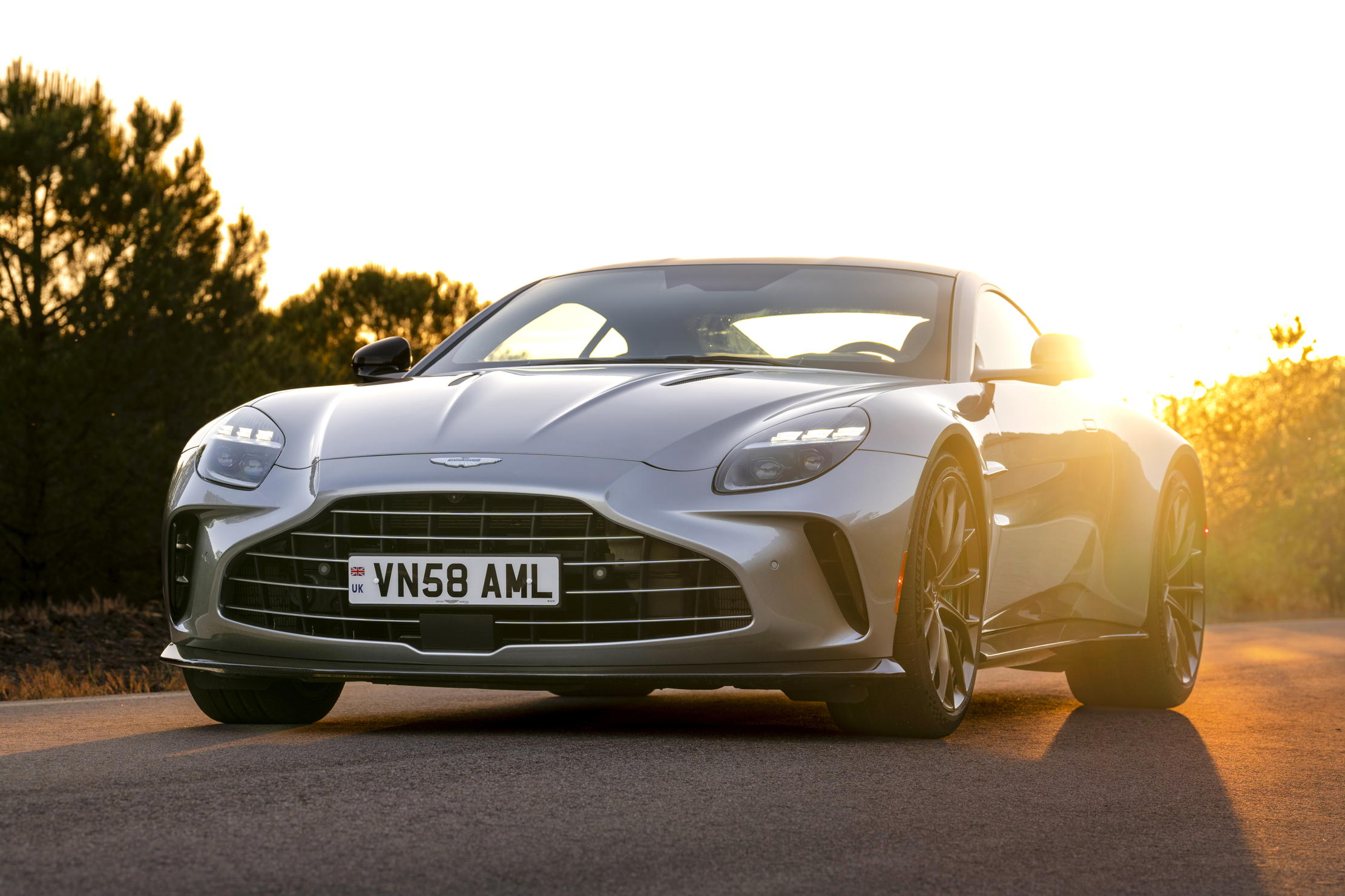
The Aston Martin Vantage review: A fusion of love, joy and metal
The 2024 Aston Martin Vantage is the two seater sports car of your dreams. Or it is, if you're Toby
Adam Hay-Nicholls is an award-winning journalist. He regularly writes for The Sunday Times Magazine, GQ, Air Mail, Metro, City AM, The Spectator and Wallpaper.
